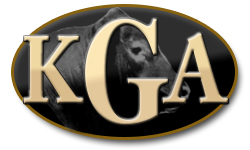Welcome to the Kansas Gelbvieh Association
History of Gelbvieh Cattle
History of Gelbvieh Cattle
Gelbvieh originated in the Bavarian Region of Germany in the 19th Century. It was once a triple purpose breed (milk, meat and draft) and was developed from several local strains of ‘Red-Yellow Franconian’ cattle; Gelbvieh translates from the German, literally, as ‘yellow cattle’. The present breed society in Germany was established in 1899.
In 1958, the German government imposed a stringent progeny testing program on the breed in a deliberate strategy to improve performance in milk and meat production traits. They used AI extensively and applied objective measurement in selection for productivity, maternal characters, fertility and calving east, as well as carcass quality.
Between 1945 and 1990, only 15% of animals exhibited at fat stock shows were Gelbvieh, yet they won 48% of the championships. In the early 1960’s animal breeders from the UK, Canada and the USA began to take notice of the generally more muscular breeds of cattle which had developed in Europe, particularly the terminal Charolais and Limousin breeds from France, and the more maternal Simmental breed from Germany.
The UK and Canada established quarantine stations and a rush of semen from these three breeds invaded what had been previously British breed territories. The Americans imported semen via Canada until they established their own quarantine station. These three European breeds then become well established in North America.
Gelbvieh had been overlooked. It was not until the mid 1970’s that Gelbvieh reached North America. However, as soon as it arrived in the USA it was immediately subjected to close scrutiny in the massive comparative breed experiments which were just then starting at the Meat Animal Research Center at Clay Center in Nebraska.

